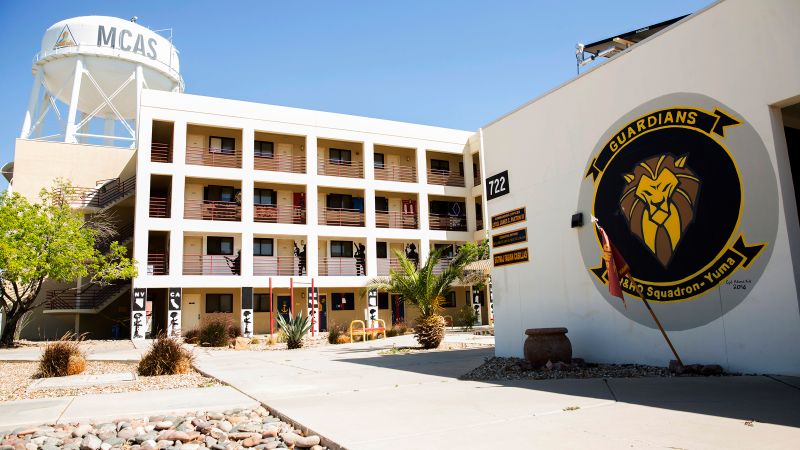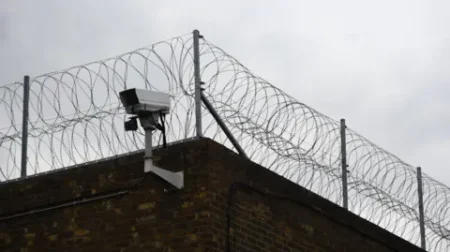The United States Departments of the Navy and Air Force are reportedly set to announce the formation of two new military zones along the southern border this week, as conveyed by three officials to CNN. These developments indicate a significant escalation in the U.S.’s enforcement measures regarding border security and immigration control, further raising questions about the extent of military involvement in these sensitive areas.
The newly proposed zones, referred to as National Defense Areas (NDAs), will be affiliated with Joint Base San Antonio, located in Texas, and the Marine Corps Air Station (MCAS) in Yuma, Arizona. According to the officials, the NDA surrounding Joint Base San Antonio is set to encompass approximately 250 miles of the Rio Grande River, while the NDA near MCAS Yuma will stretch over 100 miles along the U.S.-Mexico border. The addition of these two zones will augment the total number of NDAs to four. Previously, two other NDAs were established: one in Texas near Fort Bliss in May and another in New Mexico adjacent to Fort Huachuca in April.
The establishment of these National Defense Areas is described as a strategy to enhance operational capabilities and effectiveness in combatting illegal activity along the southern border. General Gregory Guillot, the commander of U.S. Northern Command, remarked that these extensions will empower Joint Task Force – Southern Border personnel to perform a variety of duties, including the temporary detention of individuals trespassing into the NDAs while awaiting their transfer to law enforcement authorities. This development reflects a growing military presence in coastal and border regions where immigration activities are a significant concern.
Interestingly, the Posse Comitatus Act prohibits U.S. military personnel from engaging in law enforcement activities. However, the stipulations surrounding the National Defense Areas create a legal framework that permits military members to detain individuals who may be unlawfully entering these designated zones. This raises complex legal questions about the balance between national security concerns and individual rights, particularly for migrants who may inadvertently cross into these areas without malicious intent.
Criticism has emerged from various Democratic lawmakers, who argue that the establishment of these defense zones is in direct violation of the Posse Comitatus Act. Senator Jack Reed, the ranking member of the Senate Armed Services Committee, conveyed his apprehensions, asserting that the NDAs allow military forces to operate as de facto border police. He cautioned against the potential erosion of protections that the Posse Comitatus Act has historically provided. Reed highlighted that the current administration’s approach sidesteps established legal regulations while allowing military personnel to engage in immigration control operations without invoking the Insurrection Act of 1807.
Senator Martin Heinrich of New Mexico also expressed grave concerns to Secretary of Defense Pete Hegseth regarding the due process of individuals entering these newly restricted areas—intentionally or unintentionally. The narrative suggests a significant shift in military-enforcement dynamics at the border, raising alarms about systemic implications for immigrants’ rights and legal protections.
As of June, U.S. service members have begun actively detaining migrants found within these NDAs. The Department of Justice has only recently witnessed its first convictions related to violations in the NDAs—specifically, two individuals pled guilty to trespassing charges in connection with the New Mexico NDA. In both instances, these individuals had been apprehended by Border Patrol agents. Notably, earlier this month, a judge in New Mexico dismissed numerous national security charges against migrants, citing a lack of evidence that those detained were aware of the defense areas’ existence.
The timing of the NDA establishments comes amidst heightened national security concerns, particularly as over 4,000 National Guard troops and approximately 700 active-duty Marines are currently deployed in the Los Angeles area, responding to protests against Immigration and Customs Enforcement (ICE) actions. This overlapping dynamic of militarization, immigration enforcement, and civil unrest paints a complex picture of the contemporary landscape along the U.S.-Mexico border, challenging citizens and lawmakers alike to reassess the implications of military involvement in domestic law enforcement matters.











